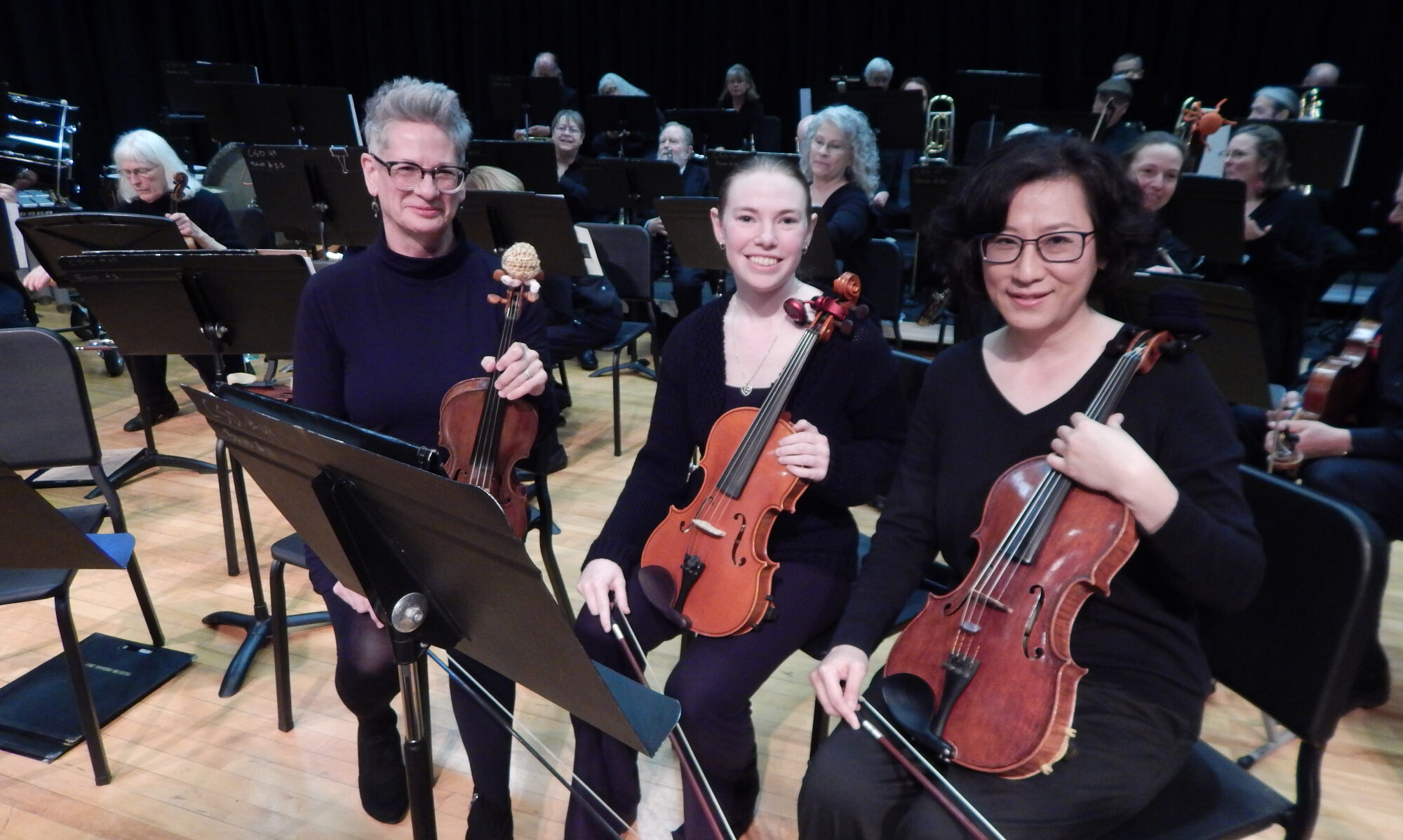
Fanfare for the Common Man, Aaron Copland
Mozart’s Bassoon Concerto, 2nd movement with Dave Krabill
New World Symphony, Dvorak
2 pm at the Chimacum HIgh School Auditorium
91 W Valley Rd, Chimacum, WA 98325
Our concerts are free to the public – donations are accepted at the door. JOIN US!
Click “Continue Reading” for access to the program notes by Miles Vokurka.
Fanfare for the Common Man
Aaron
Copland (1900-1990)
In 1942, Eugene Goossens, the British conductor of the Cincinnati Symphony Orchestra, invited 17 leading composers to write fanfares to rally the American spirit as the U.S. entered World War II. Though ten fanfares were written, only this short but powerful piece of music has survived the test of time and continues to be a regular part of many concert programs.
Copland’s distinctive sound has come to be identified with this country’s wide-open spaces and defines what is called by many “American music.” The title chosen by the composer came from a speech by then Vice-President Henry Wallace who was rallying Americans against imperialism: “Some have spoken of this American Century. I say that the century on which we are entering, the century which will come out of this war, can be and must be the century of the common man.” Copland would later echo that same sentiment himself, saying, “It is the common man, after all, who is doing all the dirty work in the war and the army. He deserves a fanfare.”
Bassoon Concerto in B-flat major,
2nd mvt, Andante ma adagio
Wolfgang Amadeus Mozart (1756-1791)
This Bassoon Concerto was written in Salzburg in June 1774, when Mozart was just eighteen years old. He was already an experienced composer with over twenty-five symphonies, a dozen string quartets and several Italian operas to his credit. It was a productive time in his life. He wrote his first piano concerto that same year, and he would later compose concertos for other wind instruments as well, including clarinet, flute, oboe and horn. These concertos were written mostly to amuse the soloists: noble dilettantes on one hand and his instrumentalist friends on the other. It is possible this bassoon concerto was composed at the request of aristocratic amateur Baron von Durnitz, or perhaps for one of the Salzburg orchestra’s young bassoonists.
The unique tempo marking of the second movement means “at a moving pace but slowly,” a very nuanced and specific instruction for the time. The second movement showcases the bassoon’s flexibility as a singing instrument. It is a slow and lyrical sonata (without development) which contains a theme that Mozart featured in the aria “Porgi, Amor” from his later opera The Marriage of Figaro.
Symphony No. 9 in E minor, “From
the New World’
Antonín Dvořák 1841
-1904
As the 19th Century was coming to an end, Czech composer Antonín Dvořák’s reputation was reaching its peak. He was among the leading European composers who wrote Romantic-era nationalistic music. By 1891, he had already written eight symphonies, numerous tone poems and orchestral program music, two sets of internationally famous Slavonic Dances, string quartets and chamber music, vocal selections and pieces for solo instruments. He caught the attention of American philanthropist Jeanette Thurber who was nurturing the idea of founding the National Conservatory of Music in New York City. She persuaded Dvořák to serve as the Conservatory’s Director from 1892 through 1895, building the school’s curriculum, hiring faculty, teaching, guest conducting and composing. He spent most of 1893 in the small Czech community of Spillville, Iowa, and during those months he created two of his most American inspired masterworks: the String Quartet in F major (the “American Quartet”) and the Symphony No. 9 (“From the New World”).
But even before Dvořák came to America he was intrigued by Longfellow’s epic poem, The Song of Hiawatha, which he had read in a Czech translation. Many people claim that American Indian motifs were used in the symphony, especially the two middle movements. And even during his time immediately before he was composing in Iowa, he witnessed a Buffalo Bill’s Wild West Show which included native American singing and he attended an Indian ceremony in Spillville. But he was probably more influenced by American spirituals that he had heard, remarking that “the future music of this country must be founded on what are called Negro melodies.” He disclaimed that he was quoting actual American melodies in his score (whether from spirituals or ritual Native American music) but wrote “original themes” touched by the flavor peculiar to indigenous American elements but treated with all the “modern” resources of symphonic writing. For example, the famous second movement Largo includes both the tonality of a Native American Indian song and the spiritual reminiscence of an almost recognizable “Swing Lo, Sweet Chariot.”
There are many people who thought that the title was to be understood as meaning “American” Symphony; in essence, a symphony with American music. This is not quite correct. As the composer himself wrote on the title page of the score, it is merely “Impressions and Greetings from the New World.” Dvořák wrote, “I should never have written the symphony ‘just so’ if I hadn’t seen America for myself.” Following the December 1893 premiere performance, a rehearsal in the National Conservatory’s Concert Hall (which was later renamed Carnegie Hall), the New York Evening Post proclaimed it “the greatest symphonic work ever composed in this country.”
